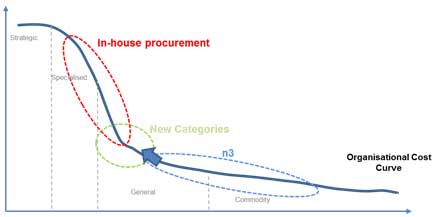A Definitive Guide to Purchasing and Supplier Relationship Management That Will Save Your Business Money
Chapter One: An Introduction to Purchasing
We understand that when you’re running a business, the area of purchasing management can be a hard region to keep on top of. Especially when it becomes all too easy to run down to the dairy to buy a bottle of milk when you run out. However, it calls into question what this type of ad-hoc purchasing behaviour can do to your overall business costs.
Unfortunately, when purchasing is neglected, your business can quickly run into high expenditures, some of which should not be there. The increase in business expenses has a detrimental effect on your profit margin.
Learn how to keep a smooth operation in how you purchase, the suppliers your business chooses to purchase through, and your relationship with them, with our Definitive Guide.
Taking charge of your purchasing and supplier relationships will see an improvement in your bottom line, an increase in profit, and an ability to keep prices competitive.
In a market that more often than not sees suppliers in the power play, businesses need to be smart about their operating costs. This calls for a strategic and well thought out purchasing management program.
This guide will take you through the steps to setting up a formal purchasing system as well as how to pick the best suppliers for your business’ needs, and how to manage those relationships.
Finally, it will discuss how group buying can help leverage the market to shift power back into the hands of your business away from the suppliers.
“A dollar gained in revenue is a very good thing assuming it leverages the current cost structure. But remember, only a small portion reaches earnings. A dollar saved from cost, however, goes directly to the bottom line. So while focusing on the top-line, don’t forget to engage in a systematic approach to governing costs as a way to ensure long-term value creation.” - Steve Odland, Forbes Magazine
COVERING THE BASICS
At its very basic definition, purchasing is buying goods and services that your businesses uses as part of its operations.
For this reason, purchasing spans a wide divide between strategic and non-strategic purchases. It is also why it can be a very easy place for cracks to appear and businesses to fall back on unstructured purchasing, simply buying products at the time it is needed, instead of planning in advance.
